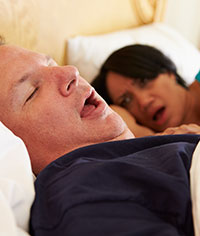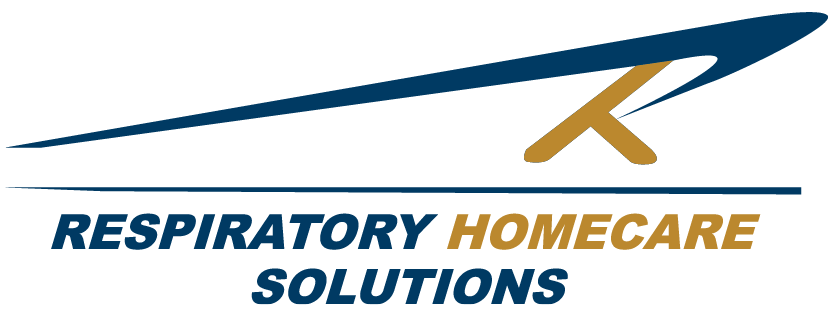Halloween brings ghosts and goblins
and scary fun for the kids.
But it’s some adults who should be afraid this Halloween. In the spirit of Halloween, we thought we’d highlight 5 scary sleep disorders:
1. Obstructive Sleep Apnea (OSA)

What It Is: One of the most common sleep disorders on our list, obstructive sleep apnea, is characterized by pauses in breathing while you sleep. Obstructive Sleep Apnea is not just snoring or feeling tired during the day – it’s a serious sleep disorder that occurs when you stop breathing or your breathing is interrupted during sleep, decreasing your oxygen levels and alerting the brain to wake you up. Sleep apnea is a common sleep disorder with 1 in 4 Canadians at risk for OSA. Undiagnosed or untreated sleep apnea results in excessive daytime sleepiness and other major health risks such as risk of diabetes, hypertension, heart failure, and stroke.
How to Treat It: Sleep apnea can be diagnosed with a simple home sleep apnea test. A family physician can provide a referral for a sleep test from a sleep clinic. RHS sleep clinics provide accredited sleep tests free of charge that also include an interpretation from an independent sleep specialist. Lifestyle changes such as weight loss, oral appliance therapy, surgery or CPAP (continuous positive airway pressure) treatment can help treat sleep apnea. Continuous positive airway pressure (CPAP) therapy is a common treatment for obstructive sleep apnea. The CPAP machine uses a hose and mask or nose piece to deliver constant and steady air pressure to keep airways open during sleep.
2. Night Terrors
What It Is: Night Terrors are more intense than your average nightmare and are most common in children. Night terrors typically occur earlier in the night during non-REM sleep, about two to three hours after a child goes to sleep. A night terror can last from 10 to 30 minutes or longer and your child is only partially awake. A child having a night terror will be very difficult to rouse and will not respond to being consoled.

How to Treat It: It is best to not wake a child having a night terror. When a child is having a night terror you should make sure your child is safe, not restricted by bed sheets or in danger of hurting themselves. To try to stop or reduce night terrors from occurring, try to reduce stress in the child’s environment, prevent him/her from staying up too late, and create a relaxing bedtime routine.
3. Narcolepsy

What It Is: Narcolepsy is a neurological disorder that affects the control of sleep and wakefulness. People with narcolepsy have involuntary, uncontrollable periods of sleep during the day, lasting from a few seconds to several minutes. These sudden sleep attacks may occur during any type of activity at any time of the day making these episodes extremely dangerous. Narcoleptics also can experience loss of muscle tone, hallucinations, and even paralysis during 85 attacks.
How to Treat It: There is no cure for narcolepsy, but medications and lifestyle modifications can help manage the symptoms of narcolepsy.
4. Restless Legs Syndrome

What It Is: Restless legs syndrome (RLS) is a sleep disorder that causes an uncontrollable urge to move your legs, usually because of an unpleasant sensation in your legs. It typically occurs in the evening when sitting or during nighttime sleeping hours when lying down. Restless leg syndrome can begin at any age and generally worsens as you age. It can disrupt sleep causing daytime fatigue that interferes with daily activities.
How to Treat It: Lifestyle changes such as cutting back on caffeine, alcohol, or tobacco may help, and some medications can help get restless legs syndrome under control.
5. Insomnia

What It Is: Insomnia is a common sleep disorder that can make it hard to fall asleep, hard to stay asleep, or cause you to wake up too early and not be able to get back to sleep. Although it sounds more troublesome than scary, insomnia makes the list because of the negative impact lack of sleep has on the body over an extended period of time. Lack of sleep from insomnia can lead to increased risk of accidents, mental health disorders and other medical problems such as high blood pressure and heart disease.
How to Treat It: It’s important to follow a nighttime routine to set yourself up for a good night’s sleep. Make the bedroom quiet and relaxing. Any activities in the bedroom should be limited to those that promote sleep such as reading or meditation. Watching TV or using electronic devices before going to sleep can be disruptive to a good night’s sleep. If the insomnia continues for an extended period of time, talk to a doctor for a referral to a sleep test to determine if another sleep disorder is present.

